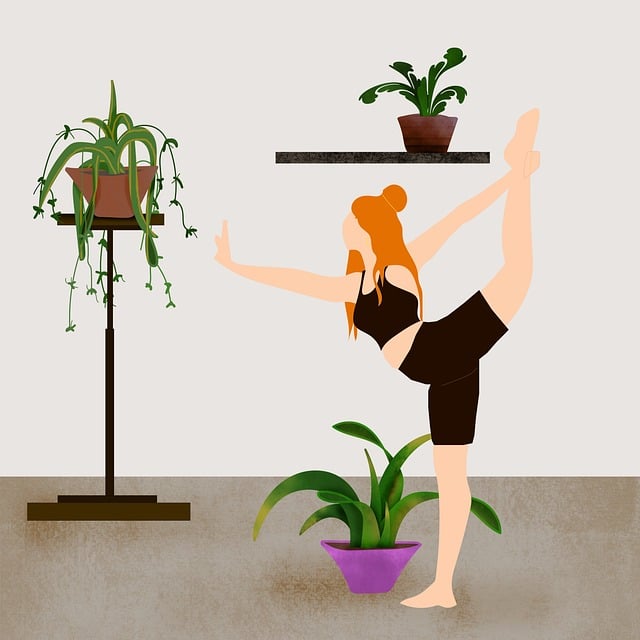This section provides a comprehensive guide on improving posture and alignment through a combination of targeted exercises, ergonomic adjustments, alignment therapy, yoga, and Pilates. It emphasizes the importance of posture correction exercises for strengthening key muscles, reducing spine strain, and promoting sustained good posture. Alignment therapy is highlighted as a personalized care approach that combines manual therapies with tailored routines, while chiropractic adjustments are recommended for effectively realigning the spine and improving body mechanics. The article also advocates for an ergonomic workspace to minimize musculoskeletal stress, offering tips on adjustable furniture and screen positioning. Yoga for posture is suggested as a practice that enhances flexibility and strength, complementing core strengthening routines from Pilates, which focus on abdominal muscles that support the spine. Posture support braces are recommended as temporary aids to guide the body towards better posture habits during recovery or transition periods. Overall, the section suggests adopting a multifaceted approach involving exercises, therapy, ergonomic adjustments, and supportive devices for effective posture and alignment solutions.
Navigating the complexities of maintaining good posture is a multifaceted endeavor. This article delves into various strategies and tools designed to enhance your physical alignment. From core strengthening routines and posture correction exercises to alignment therapy such as chiropractic adjustments, we explore a comprehensive approach to posture management. Additionally, integrating yoga and Pilates into your daily routine can significantly contribute to optimal alignment. We will also discuss ergonomic workspace tips and the benefits of posture support braces. Join us as we examine how these methods can collectively foster healthy posture habits for long-term well-being.
- Embracing Posture and Alignment Solutions: Exploring Devices and Tools
- Enhancing Core Strength: Routines and Exercises for Better Posture
- The Role of Chiropractic Adjustments in Maintaining Proper Alignment
- Integrating Yoga and Pilates into Your Routine for Optimal Alignment
Embracing Posture and Alignment Solutions: Exploring Devices and Tools

Embracing healthy posture and alignment begins with understanding the role of posture correction exercises. These targeted routines help to strengthen the muscles that support good posture, thereby reducing the strain on your spine and alleviating discomfort. For those seeking specialized care, alignment therapy can offer a personalized approach to address individual needs, often incorporating a combination of manual therapies and corrective exercises. Additionally, chiropractic adjustments can effectively realign the spine and improve overall body mechanics, contributing to better posture over time.
In the quest for optimal spinal health, ergonomic workspace tips are invaluable. They ensure that your environment supports good posture by promoting positions that minimize stress on your musculoskeletal system. For instance, adjusting your chair and desk to proper heights or using a monitor stand to position your screen at eye level can significantly reduce the risk of developing poor posture habits due to prolonged sitting. Moreover, integrating yoga for posture into your daily routine can enhance flexibility and strength, which are foundational for maintaining proper alignment. Similarly, core strengthening routines, such as pilates for alignment, focus on the deep abdominal muscles that provide support and stability to the spine, further aiding in maintaining an upright posture. Posture support braces can also be a temporary aid for those transitioning into new posture habits or recovering from injuries, offering gentle guidance to help retrain your body’s default positioning.
Enhancing Core Strength: Routines and Exercises for Better Posture

Incorporating posture and alignment solutions into daily life can significantly enhance one’s overall posture. Core strengthening routines, such as Pilates for alignment, focus on fortifying the abdominal and back muscles that support good posture. These exercises not only improve core strength but also promote better spinal stability and balance. For those seeking a more hands-on approach, chiropractic adjustments can realign the spine and alleviate pressure on nerves, contributing to improved posture. Additionally, alignment therapy can provide tailored strategies to address individual postural deficiencies. Ergonomic workspace tips are also pivotal in maintaining optimal body positioning throughout the day, reducing the strain on muscles and joints.
Yoga for posture is an effective practice that combines physical movement, meditation, and breathwork to enhance body awareness and alignment. Certain yoga poses target specific muscle groups responsible for supporting good posture, encouraging a stronger, more flexible core. When combined with mindfulness techniques, this holistic approach can lead to sustainable improvements in one’s stance and gait. Posture support braces offer immediate physical assistance by providing external support to correct slouching or rounded shoulders. These devices can be particularly helpful as an adjunct to posture correction exercises, aiding in the retraining of the body to maintain proper alignment without relying solely on the brace for support.
The Role of Chiropractic Adjustments in Maintaining Proper Alignment

Chiropractic care offers a myriad of benefits for those seeking to maintain proper alignment and improve their posture. Chiropractic adjustments, a cornerstone in this field, involve manual or instrument-assisted thrusts that realign vertebrae, thereby facilitating better spinal function and supporting overall body alignment. These adjustments can alleviate tension and stress on the musculoskeletal system, which often leads to improved posture. Additionally, a series of posture correction exercises may be prescribed by a chiropractor to reinforce the effects of the adjustments and encourage the body to maintain better alignment independently. These exercises are tailored to each individual’s specific needs, enhancing their effectiveness.
Incorporating ergonomic workspace tips can further complement chiropractic care for posture correction. By adopting a supportive chair that promotes good spinal alignment and ensuring that computer monitors are at eye level, individuals can minimize the strain on their necks and backs while working. This proactive approach to one’s environment contributes significantly to maintaining proper posture throughout the day. Furthermore, complementary therapies such as yoga for posture and core strengthening routines or pilates for alignment can be integrated into one’s daily routine to enhance the body’s natural ability to maintain a balanced posture. These practices not only target the core muscles but also improve flexibility and awareness of posture, leading to a more harmonious body alignment. Posture support braces can provide additional assistance during the transition period, offering the necessary support to help the body adapt to better postural habits.
Integrating Yoga and Pilates into Your Routine for Optimal Alignment

Incorporating yoga and Pilates into your daily routine can significantly enhance posture and alignment. Yoga, with its focus on mindful movement and flexibility, offers a range of poses that target specific areas to improve overall posture and alignment solutions. For instance, poses like Tadasana (Mountain Pose) and Setu Bandhasana (Bridge Pose) are excellent for stretching and strengthening the back, promoting a more upright position. Similarly, Pilates exercises emphasize core strengthening routines that support the spine, thereby improving alignment. The Pilates Roll-Down, for example, not only tones the abdominal muscles but also encourages a natural spinal curvature. These exercises can be complementary to posture correction exercises and when combined with chiropractic adjustments, can lead to marked improvements in one’s posture.
To further support your efforts in maintaining optimal alignment, consider an ergonomic workspace. Ergonomic workspace tips, such as ensuring your computer monitor is at eye level and your chair supports the natural curve of your spine, can mitigate the strain of prolonged sitting. Additionally, using posture support braces during activities that require sustained periods of inactivity, like working at a desk, can provide gentle guidance towards better posture. These braces are particularly helpful for individuals who have difficulty maintaining proper alignment due to muscle weakness or structural issues. By integrating yoga and Pilates with ergonomic practices and possibly seeking the expertise of a chiropractor for alignment therapy, you can create a comprehensive approach to posture correction that addresses both the cause and the symptom of poor posture.
In conclusion, maintaining healthy posture is a multifaceted endeavor that benefits from a comprehensive approach. Utilizing posture and alignment solutions like specialized devices and tools can provide immediate support and reminders to sit and stand correctly. Core strengthening routines play a pivotal role in bolstering the body’s natural ability to maintain good posture, while ergonomic workspace tips tailor daily environments for optimal spinal health. Chiropractic adjustments offer targeted relief and realignment, ensuring that the body functions at its best. Integrating yoga and Pilates into your routine not only enhances flexibility but also promotes long-term posture correction. For those seeking additional support, posture support braces can be a valuable temporary aid. By combining these strategies, individuals can achieve and sustain better alignment, leading to improved overall well-being and reduced risk of associated health issues.
